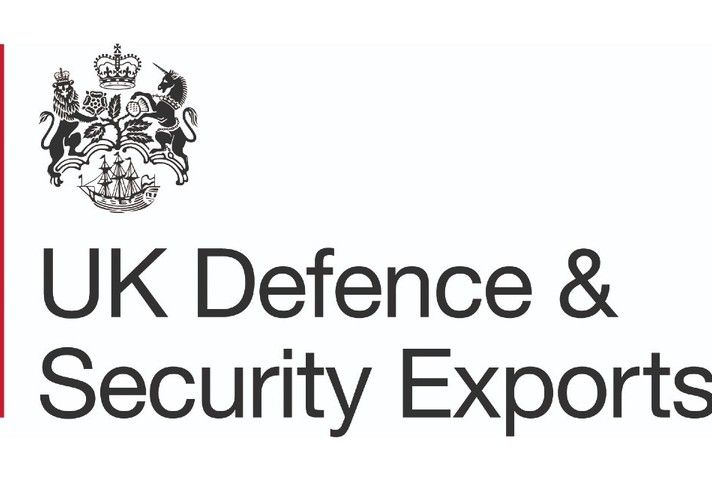How can Defence Embed Innovation to Realise its Global Ambitions?
- News Article
- DSEI

 KEY POINTS
KEY POINTS
Rapid modernisation, innovation and technical development is needed for the UK to meet it’s twin priorities of protecting European allies, and stability in the Indo-Pacific.
-
Using innovation through technology, organisation and doctrine to improve products, processes and services can contribute towards these challenges.
-
Defence procurement processes can diminish the opportunities brought by innovation
-
These are not insurmountable. Opportunities for: modularity by design, supply chain insights, industry wide collaboration, personnel rotational resilience and readiness need to be harnessed to utilise benefits from innovation.
Navigating Competing Priorities
The Integrated Review Refresh 2023 (IRR2023) highlights the UK’s international priorities as:
1) Euro-Atlantic; and
2) Indo-Pacific.
Protecting its Allies in Europe and maintaining peace on the other side of the world calls for the UK to cohere and better integrate capabilities. As the nature of the UK’s involvement in conflict shifts away from counter-insurgency and towards more ‘traditional’ state-to-state competition, the UK armed forces need to demonstrate combat credibility in the Land, Air, Sea, Cyber and Space domains.
This ambition requires rapid modernisation, innovation, and technical development. As recognised by the latest Defence Command Paper 2023, the UK needs to have the necessary technology, organisations, and doctrine to operate in the most effective and efficient way, with the right connectivity between Allies in a resource-constrained environment.
IRR2023 highlights the need to target state support towards technology centres to build expertise from which the UK’s allies can draw and benefit. This requires the UK to be at the forefront of innovation and have the flexibility to utilise technologies such as AI, robotics and quantum computing in a Defence context. In a resource-constrained environment, the UK’s existing digital and technological industrial base presents an opportunity to make choices and exploit critical industries. The UK already has innovation, digital technology, and transformation industrial partners able to improve capabilities and drive economic growth – defence needs to better utilise them.
How to define Defence innovation?
The importance of Defence innovation is evident. The Ukrainian military’s ability to innovate in the face of conventional manoeuvre warfare has prompted Defence to reflect on in-train, long-term ‘bets’ and the need for cultural change. This can be seen with the use of civilian technology as a critical battlefield tool for both combat and surveillance, or the use of the Starlink network to provide resilient, secure battlefield communications. As a US commander operating in an urban warfare environment noted, what he needed to achieve effect at the time was a ‘credit card and an Amazon account.’[1]
To that end, it is more useful to assess defence innovation as a way of transforming ideas and knowledge into new or improved products, processes, and services for military and dual-use applications.[2]
Barriers to Entry
Translating innovative ideas into tangible outputs is not a straightforward process, however. Standard procurement practice in Defence has seen new capabilities enter a ‘valley of death’ where the speed of adoption has slowed to the point that it no longer delivers in time for it to be useful. The legislative frameworks, commitments and structures which govern Defence processes entail layers of governance, oversight and regulation which cannot and in many cases, should not be removed. Despite this, there are still significant barriers to innovation, and for small and emerging start-ups and academia, to bring value. For example, the US application forms for innovation and procurement initiatives are five to seven pages long, and results are announced in weeks, the UK process is relatively cumbersome, risking key innovations and partners being lost in the previously-referenced ‘valley of death’ which “has to be remedied through fundamental cultural change”.[3] It must find accessible means for new players to enter and compete in procurement markets – relying on Tier 1 suppliers to absorb start-ups risks not only driving innovation away but further constraining the market.[4]
Any discussion of innovation needs to be realistic about what can and cannot be accomplished or transformed. However, that does not mean things cannot be improved. UK Defence is alive to many of these issues and has recognised that in order to deliver the priorities set out in the IRR23 it must do things differently. It must have a clear framework to guide its innovation strategy, facilitate decision-making and prioritise. There are better ways to identify, scale and adopt new capabilities at the speed of relevance, rather than relying on existing procurement practices. It is possible to drive innovation and create a step-change in Defence capability.
How can we resolve this?
There are three dimensions in which defence innovation can take place:
- Technology
- Organisations
- Doctrine
Some examples of how this can take place are described below.
Technology
- Modular by Design.
Defence should focus on a portfolio of procurement resilience; investing in R&D that enables downstream modularity and re-use across systems and platforms by creating common interfaces. The creation of common systems across platforms allows the easier replacement and reduces long-term maintenance and training costs.
- Supply Chain Insight. Innovation cannot be leveraged if supply chains are interdicted, denied through legislation, or rejected by a third-party. Creating a cross-industry map of suppliers down to critical sub-contractors, can both identify key vulnerabilities and help Industry increase collaboration.[5] Defence is almost certain to be over-reliant on commercial transport options such as commercial rail and shipping (i.e., DeutscheBahn Cargo) to sustain military mobility across international borders.[6]
Organisations
- Collaborate to innovate. Siloed Government agencies often create costly inefficiencies when dealing with modernisation.[7] The UK’s ARIA is a one step in creating a unified demand signal to Industry. Without an empowered governance structure able engage Government bodies and allied equivalents, such as NATO’s Defence Innovation Accelerator for the North Atlantic (DIANA), Defence will struggle to drive interoperability, influence commercial innovation, and integrate final products into its Services.
- Personnel Rotation Resilience. Too often handovers between personnel result in processes becoming curtailed, informal, or held on a single siloed system and risk the ability to deliver new capabilities and pathways to action. Instructions on the role, relationships, and mitigations for common issues should be formalised and clear with integrated, pragmatic, options to reset processes when they fail.
Doctrine
- Learn to Innovate. To effectively respond and mitigate multi-domain threats at the speed of relevance, the UK requires streamlined decision and procurement processes, a flexible readiness force supported by resilient transport infrastructure, and the ability to adapt to emerging threats at pace and – if necessary - scale. The Defence and Security Accelerator, Defence Innovation Accelerator North Atlantic (DIANA), London Office of Rapid Cybersecurity Advancement and the National Cybersecurity Centre are all organisations that have gone to market, sought to innovate, develop ecosystems and start to operate in diverse ways to respond to a rapidly changing threat environment.
Fundamentally, innovation must be how UK defence operates, not just something it does. To agree with an initiative is one thing, but to truly understand why it is critical to success is integral to achieving the buy in and traction to embrace the innovation throughout an organisation. This requires confidence and vision to think about “just in case” innovation rather than “just in time” innovation that immediately puts an organisation on the back foot. Innovation must be a keystone of the defence operating model and a culture of innovation needs to be facilitated at all levels, providing teams with experimental freedom in the hunt in the unknown for a solution that could shift the international security environment.
AUTHORS:

[left to right]
Zach Wolfraim - zwolfraim@deloitte.co.uk
Tony Reeves - treeves@deloitte.co.uk
[1] Interview with serving US personnel, 2017.
[2] Mahnken, Ross, Cheung, Institute of Global Conflict and Cooperation, https://escholarship.org/uc/item/3d0795p8
[3] committees.parliament.uk, Q 178 (Rt Hon Ben Wallace MP) in ‘UK Defence Policy: From Aspiration To Reality?’ (Jan 23), last accessed 27 May 23
[4] Gov.uk, ‘DSPCR Chapter 9: procuring Urgent Capability Requirements (UCRs)’ dated 22 Mar 23, last accessed 28 May 23
[5] www.thespacereview.com, The Space review: ‘How government and industry should reshape the business of space’ (8 May 23), last accessed 26 May 23
[6] telegraph.co.uk, Ukraine: The Latest – Interview with Lt Gen Hodges (29 May 23)
[7] deloitte.com, ‘Tackling funding silos’ (23 Mar 23), last accessed 7 Jun 23
© 2023 Deloitte LLP. All Rights Reserved. The contents of this article are confidential and the intellectual property of Deloitte LLP and may not be reproduced, redistributed or passed on to any other person in whole or in part without the prior written consent of Deloitte.
This publication contains general information only, and none of the Deloitte member firms are by means of this publication, rendering professional advice or services. Before making any decision or taking any action that may affect your business, you should consult a qualified professional adviser.
-
Latest Defence and Security Capabilities set to be on Display in London as DSEI 2023 Begins
12 Sep 2023Defence and Security Equipment International 2023 (DSEI) opened its doors Tuesday 12th September. DSEI 2023 and DSEI Connect will together host some 1,500 defence and security suppliers – including al ... -
Unlocking the Defence Workforce Ecosystem
05 Sep 2023The UK MOD is facing unprecedented challenges in attracting, growing, and retaining the skills it needs to deliver its mission. The new systems and technologies that the UK is fielding add to this cha ... -
DSEI 2023: Royal Navy To Set Up In Receive Mode, To Support Partnering Against Future Threats
04 Sep 2023 Dr Lee WillettThe UK Royal Navy (RN) will have significant presence at the DSEI 2023 exhibition, which is taking place at ExCeL London on 12-15 September. It is also seeking to grasp the engagement opportunity that ... -
Agile Acquisition & Rapid Delivery in Defence – Resilient Teams Harnessing Digital Means
04 Sep 2023“Technology is an extension of human behaviour” – a quote attributed variously, but traceable to the Canadian philosopher, Herbert Marshall McLuhan. Whilst originally referencing the study of media, t ... -
“Nobody ever stops or intervenes in a poor project soon enough. The temptation is always to ignore or under-report warning signs and give more time for things to improve to avoid revealing bad news, r ...
-
Understanding space: DSEI and UK Space Command
01 Sep 2023 John HillIn March this year, the European Space Agency (ESA) stressed the importance of space as a disruptive force in society and defence in its space strategy report, ‘Revolution Space’. “Countries… that wi ...

-038.jpg/fit-in/500x500/filters:no_upscale())
)
)
)
)
)

